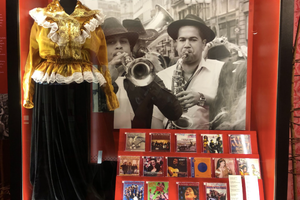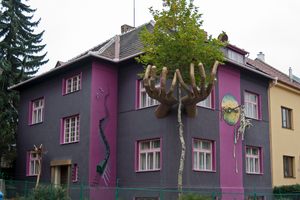About
Stolpersteine, or “stumbling stones,” dot the streets and sidewalks of cities across Czechia, their brassy sheen occasionally catching the light and piquing the curiosity of a passing pedestrian. The small plaques commemorating victims of the Holocaust are inscribed with the names of those killed, holding them forever in the public’s consciousness. In the eastern district of Brno, however, you’ll have to head down a winding, pedestrian street to find the unassuming spot on the sidewalk where two stolpersteine sit, gleaming, in front of a small house. Crouch a bit closer, and you’ll spot their inscriptions: Amálie and Jan Daniel, the first two Roma victims of the Holocaust, both of whom died in Auschwitz in 1943.
In Czechia and across much of Europe, Roma people have endured centuries of persecution and oppression. The Daniels, a Roma family of blacksmiths and tinkers, founded the Černovičky settlement in Brno in the 1880s. When World War II broke out, Nazi troops targeted many Roma communities, including hundreds of women, children, and men in Černovičky, sending them to concentration camps. Somewhere between 200,000 and 500,000 Roma people were killed. For a long time, the history of their genocide was all but erased.
It wasn’t until 2017 that the Czech Museum of Roma Culture brought a small, humble reminder of this history to the streets of Brno: two bronze-capped stones remembering Amálie and Jan, placed just outside of where they once lived.
Related Tags
Know Before You Go
The best way to get here is by bus or trolleybus; take line 31 or 33 to the Černovičky stop. If you're traveling by car, you can find parking at the nearby shopping center. Consider visiting Stránská Rock ('Stránská skála'), a stunning natural viewpoint in Brno, while you're there.
Community Contributors
Added By
Published
May 25, 2020

























